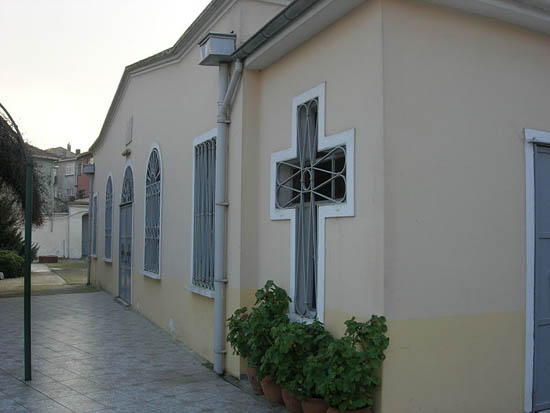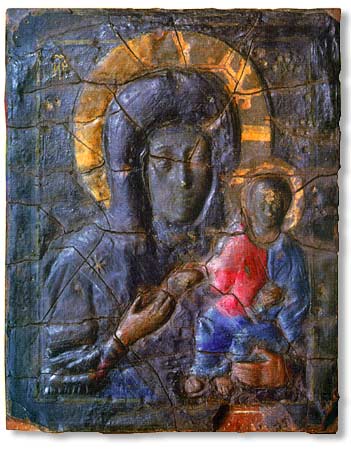St. Mary's of Blachernae
The Church of St Mary of Blachernae was the most important sanctuary of the Virgin Mary (the Theotokos) in Byzantine times. It was built by the Virgin Empress Pulcheria in the 450’s on the site of a sacred spring. Justinian expanded and remodeled it.
Inside, a fountain of holy water flowed from the hands of a marble statue of the Virgin into a sacred pool where the emperors would attend bathing purification rituals. So holy was the church that in the 11th century a royal palace grew up around it and it became the official imperial residence until 1453.
The church and palace were destroyed by fire in 1434, a sign that Constantinople would soon fall, which it did in 1453. Even to this day, iconoclasts blame the Byzantine empresses for "corrupting" the Church with icons ("idols") of the Virgin Mary and the saints because they get between God and Man.
Built on the same location in 1867 is the church shown below. The sacred spring is still inside and it's a place of pilgrimage.

In Theodora’s day the original church was famous for housing the holy Robe (or Veil) of the Virgin, brought from Palestine in the 450's, along with her Girdle (belt). In later centuries, the church would house the Icon of the Virgin Blachernitissa, which saved the city from attack in 626, and the Mandylion, the shroud in which Jesus was wrapped, which was here from 944.
It is unclear how many of these icons were destroyed in the Iconoclast period of the 8th and 9th centuries, or in the sack of the city by Crusaders in 1204 or the fire of 1434. The holy Robe of the Virgin appears to have disappeared but some say that it reappeared as the Sancta Camisia of Chartres Cathedral. Some say the Icon of the Virgin Blachernitissa is the icon shown below, which is on display in Moscow's Tretyakov Gallery. Some say the Mandylion is the Turin Shroud... (Carbon dating suggests the Turin Shroud actually was created between 1260 and 1390; historical evidence suggests it first popped up in the 1350's near Troyes, France, when its authenticity was as disputed as it is today.)

For another famous Byzantine icon, The Legend of the True Cross, click here.
